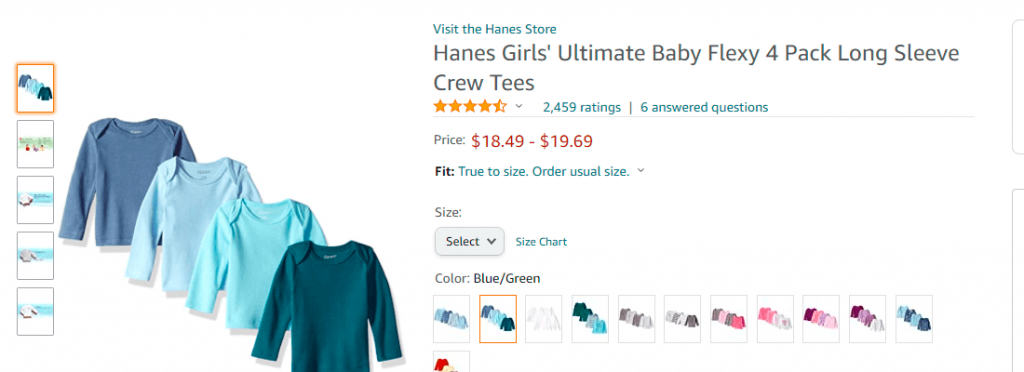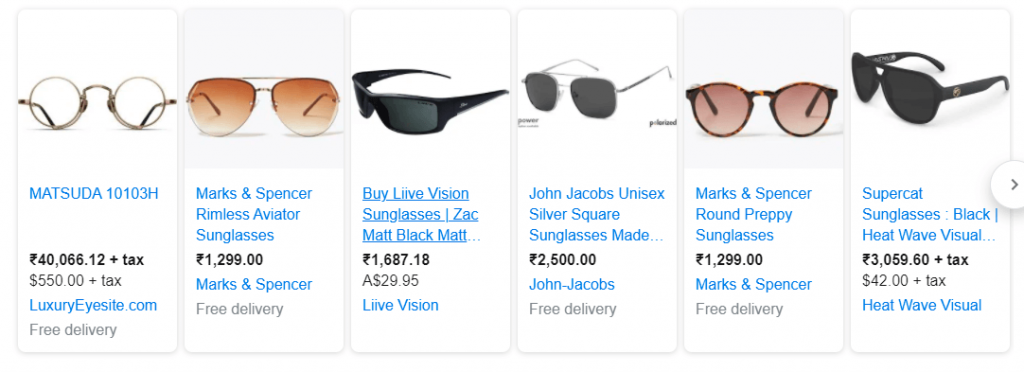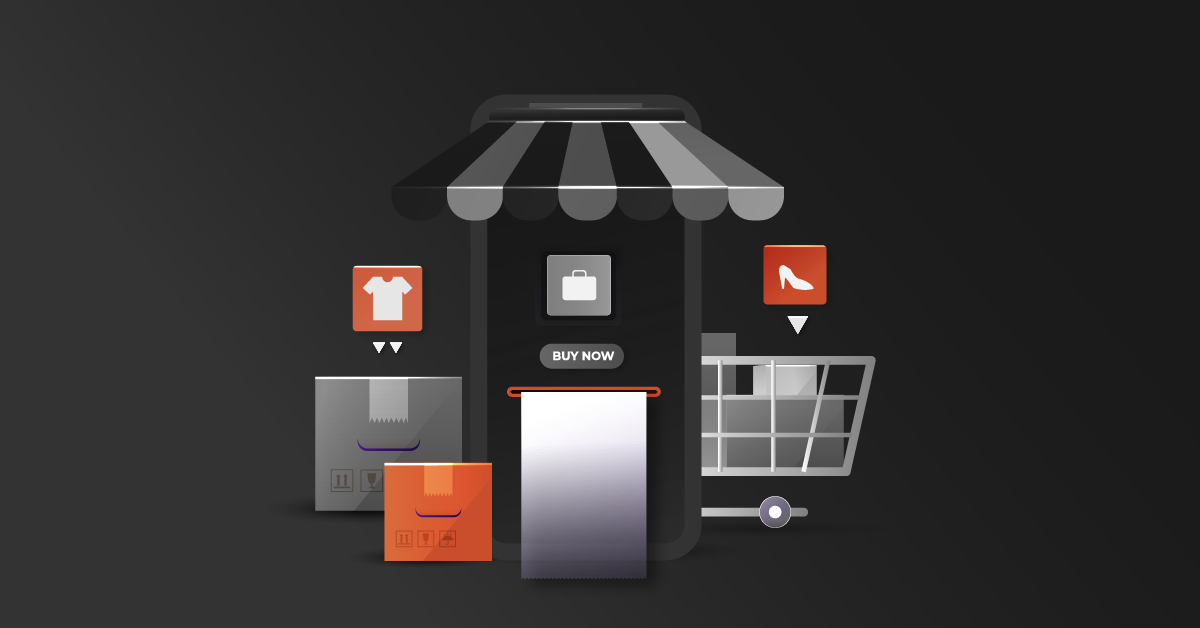Contents
What is a Product Title?
A Product Title is a name you give to your product to be displayed on your online sales places. It speaks clearly about what your product is and not about its functionality or benefits in any case.
Why should you care about a Product title?
Thinking what’s this big deal about product titles? Aren’t they simply names?
Well yeah, they are! But what’s important is that they give your customers a first-hand idea of what they’re looking at. For example, if you say,
Shoes-Size 9-In stock. There are more than 5 mistakes you will find with this title. Wondering how? Read on.
A product title is important for your product as it is the first thing the customers notice during their online search. Yeah, even before they look at the image. If a title looks incomplete or spammy they wouldn’t even go further to look at its description. Hence a solid product title is an attention catcher for your product to be qualified for selling.
Just as they say, “A powerful headline beholds the attention of a reader, a product title beholds that of a customer.”
Why do B2Bs need a convincing product title?
B2B and B2C are different in their operation and information. B2B distributors and manufacturers have more complex product information. With 74% of B2B buyers researching at least half of their work purchases online, [bctt tweet=”B2B businesses are moving their businesses online to gain new customers as opposed to the prior practice of maintaining online portals that served as catalogs to existing customers.”]
Just like B2C, B2B distributors and manufacturers need convincing product titles to attract a new audience and provide a good customer experience to the existing customers. In this blog, you will see how to write effective eCommerce titles for B2B and B2C businesses.
Moving on, let’s see what methods you can use to write solid product titles!
1. Keep it Relevant to the Product
Write a title that describes the product on your landing page. It should not speak of the advantages of that product because you can do that in the product description. The title should only do this one job and nothing else. Period.
2. Choose the Right Format
Figure out the right format for your product. The format changes based on the category of the product. We’ve discussed different formats for B2B and B2c businesses. Read on.
For example, fashion/Sports products could have this format.
[Brand name]-[Style name]-[Gender]-[Product name]-[Size]-[Colour]. Nike’s men’s shoe is a good example.
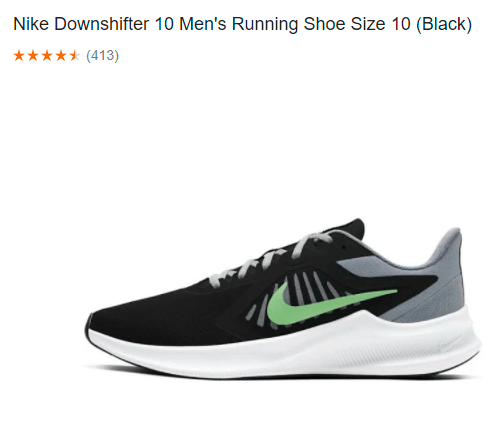
A B2B variant of this format could be [Brand name]-[Product code]-[Model number]-[Product name]
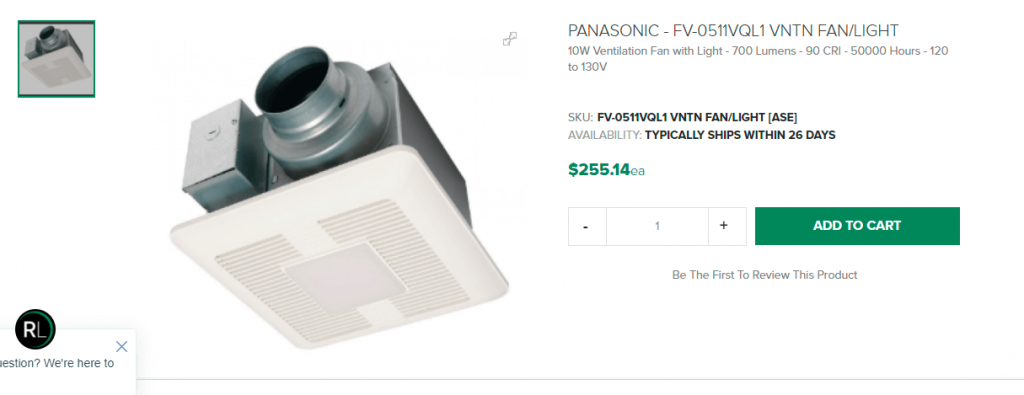
This can be different if you have bundled products or multi-unit packages.
A bundled product is one that consists of an assemblage of parts. An example of a bundled product could be a camera. In the image below the title format goes like this,
[Brand name]-[Model number]-[Style]-[Specifications]-[Bundled items]-[Number of items]
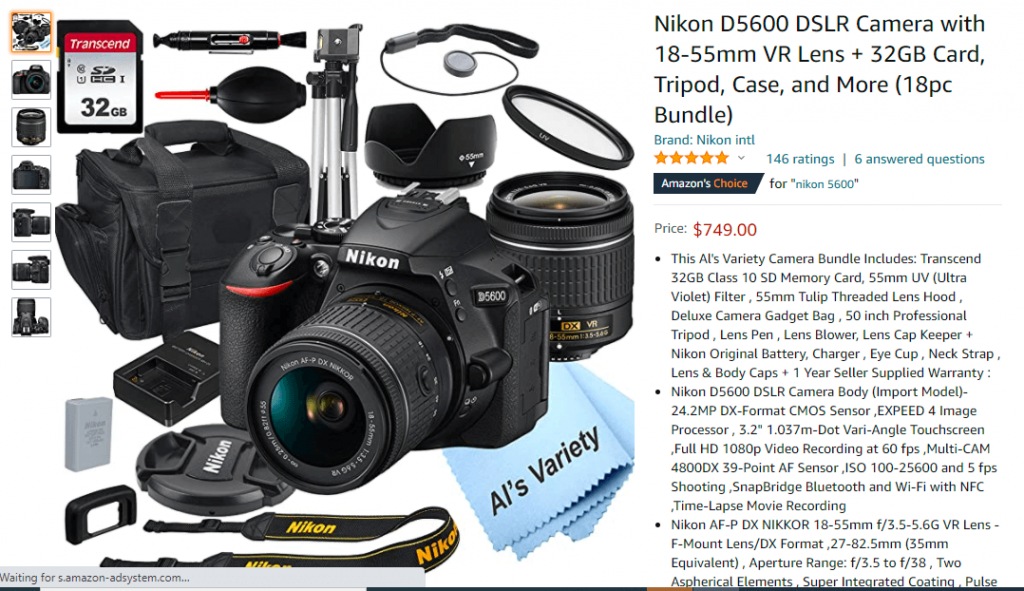
The product title format for a B2B distributor would be,
[Product name]-[Size]-[Items included].
When a product has no brand name, you either mention it as Generic or leave it blank and start with the name of the product. While writing the names of items included, only include the main components of the product and avoid writing miscellaneous fixtures in the title. Eg: Handle, frame, and microfiber pad are the components of a mop set, and boxes, packing coverage, or spare nuts or bolts are miscellaneous items.

A multi-unit package is a product that has multiple iterations of a base product within the same package. A pack of T-shirts, a pack of night trousers, a pack of coffee mugs and so on. In a multi-unit package, it is important to name the base product in the title followed by the style and number of items in a single package. Below is an example of how a multi-unit package eCommerce title looks.
[Brand name]-[Style name]-[Number of Items]
A B2B manufacturer or distributor selling hand sanitizers as wholesale items could have a product title as shown in the picture below.
[Brand name]-[Product Name]-[Bundle type]-[Number of items]-[Quantity of each item]
3. Use Simple Language for SEO Product Titles
Keep the language simple and easy to understand. We recommend using 8th-grade English. Keeping titles concise and clear helps you look relatable and genuine. This is a product title that when shows up, the buyer knows exactly what it is. Even if the image takes a second or two more to load, the SEO product title will keep the customer on your page because it is simple and relevant.

The use of a foreign language is best avoided unless you are selling in a regional language. Usage of foreign brand names like the one shown in the image below is permissible with most marketplaces. Note that after the brand name the title is continued in simple English.
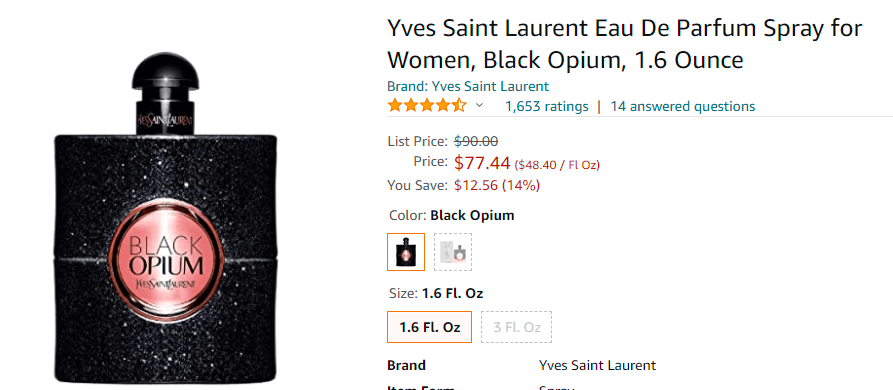
4. Say No to Fluff
While it is a good practice to make full use of the character limit set by the marketplaces, it is best to refrain from using fluff words. Using subjective words like the “most amazing”, “hottest sale”, or sales words like “Sale up to 80% off ” or “Trending products 2019 new arrivals” makes your product title look fluffy and unrelated to the product you are selling.

Avoid using special characters like $,%,*,@,#,<,^ and so on. They make your product look spammy.
Most marketplace guidelines restrict the usage of fluff words. If you still end up using them, your product won’t show up on the marketplace search or the search engine!
5. Use Correct Grammar in your eCommerce Product Titles
This is important so that you don’t lose the customers’ interest due to primitive mistakes like wrong spellings or grammar. Loopholes like wrong grammar make you look unprofessional. Check your product titles with a basic tool like Grammarly and you’d be good to go.
Here are some more tips to avoid badly written eCommerce product titles
- Avoid using all CAPS! Capital letters symbolize shouting or attention-seeking behavior.
- Capitalize only the first letters of words except for prepositions like of, to, at, etc.
- Do not use objectionable language or obscene words in your product titles, most marketplaces have a restriction on that.
- Do not use too many white spaces in your title.
Here’s a review by a user who was asked if he would shop from an online cake shop that had bad grammar in its title.
6. Decide the Right Length and SEO Keyword Usage
While some studies suggest that due to customers’ limited attention time frame, it is best to use 50-80 characters in your product titles, some also opine that using keywords and detailed titles are beneficial.
Different sites have different character limits for these titles. Here are a few popular ones.
- Amazon- 200 characters
- eBay – 80 characters
- Google shopping – 150 characters of which 70 get displayed in search results.
- Etsy- 140 characters
- Bonanza- 80 characters
We’d recommend using the full character limit for product titles, but never use keywords just for the sake of stuffing.
Consider some of these tips to formulate a solid SEO product title when in doubt.
Whenever you have short product titles lengthening them using keywords is a good idea. See the image below, this product would show up in the results, if a user searched for UV-protection sunglasses.

Optimization of product titles with SEO keywords dramatically increases the impressions. According to research, upon adding a search term (in the image below- “Adidas slides”) before the product name, its impressions saw a remarkable increase as shown in the image below.
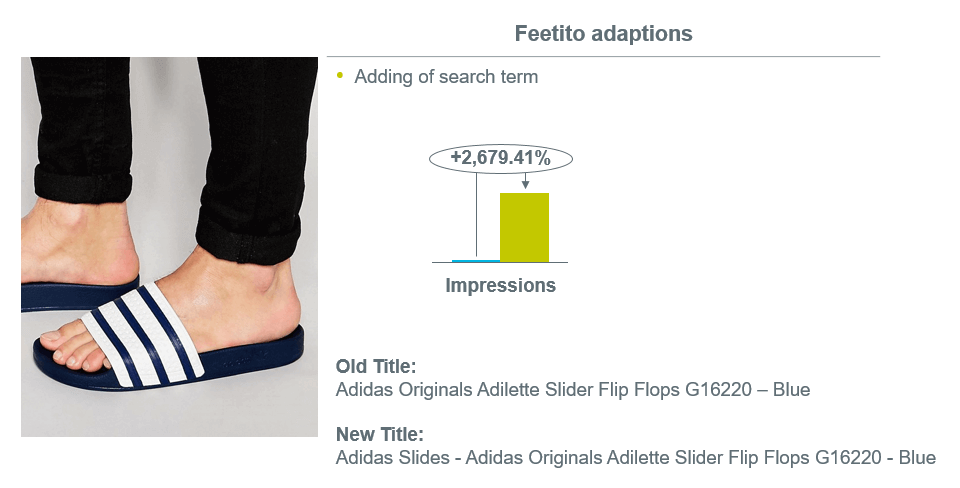
If you’re having a hard time thinking words for your product, the easiest way out of this is to search for your product online and observe the listings that appear. You can see what words others are using. You will also be able to judge what kind of SEO product titles get approved by the search engines. The search term for the image below was “Sunglasses”.
7. Distinguish Variant Products
It is always good to have a different SEO product title for each variant of your product. For example, a dress with a size XS and a size L can have a differentiator in terms of size.


This improves your visibility on search results.
8. Do not Mislead
Writing a misleading product title may get the customer on your website but it goes no further from there. Do not mislead your potential customers by writing titles that look great but do not match the product on sale.
According to a statistical study about customer retention and loyalty, 65% of a company’s business comes from existing customers. It also states that 93% of customers are likely to make repeat purchases with companies who offer excellent customer service.
Hence customer satisfaction should be the top priority for you while writing product titles for your business. Another important thing, only second to customer satisfaction is the proper usage of keywords in your eCommerce titles.
Pro tip– Consider putting the most searched keywords at the beginning of your product titles to see an increase in impressions.
So, did you identify the 5+ mistakes with the title we spoke of at the beginning of this blog? Let us know in the comments.
Enjoyed reading this blog? Subscribe to our blog for more updates on topics related to eCommerce and the PIM industry


